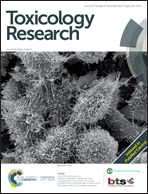Novel evaluation of sevoflurane anesthetic exposure on the testicular germ cells of neonatal male mice
Abstract
Background: Inhalatory anesthetics may impact spermatogenesis and sexual behavior. Comprehensive evaluation should be conducted to screen the effect of inhalatory anesthetics on the sperm and semen quality. This experimental research was organized to assess the impacts of sevoflurane during the period of neonatal spermatogenesis. Materials and methods: Twenty-one pregnant mice were obtained from the Pasteur Institute. After birth, neonates were categorized based on exposure to Monitored Anesthesia Care (MAC) of sevoflurane into three groups: experimental 1, experimental 2 and control. In order to investigate the testicular condition, a histological evaluation, including apoptosis study and immunohistochemistry, was performed. Not only apoptotic target genes such as Bax and Bcl-2, but also microRNA17-92, were investigated in testicular samples via real-time polymerase chain reaction (real-time PCR). Results: The outcomes of this work indicated the effects of sevoflurane on spermatogonial and germ cells in testicular tissue via stimulating apoptotic target genes and microRNA-17-92. The proportion of Bax/Bcl-2 in the experimental group was 8.318699 ± 1.093, and the proportion of Bax/Bcl-2 in the control group was 2.631 ± 0.079. There was a significant (p ≤ 0.002) difference among the control group and both experimental groups. Conclusion: Sequential sevoflurane exposure during the neonatal period may create testicular dysfunction due to the high level of apoptosis in spermatogonial cells. Also, sevoflurane may affect spermatogenesis by influencing other biomarkers, such as microRNA.



 Please wait while we load your content...
Please wait while we load your content...